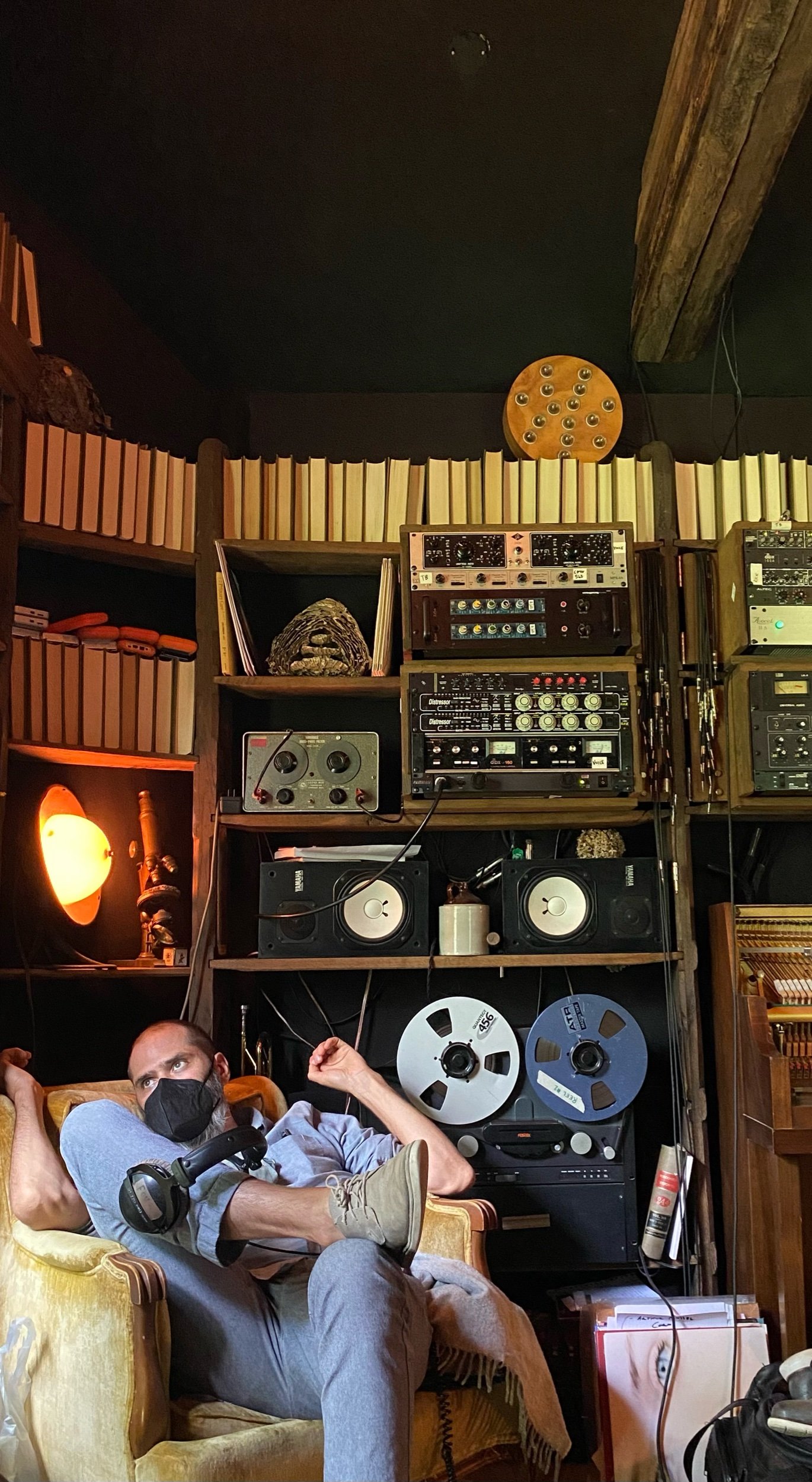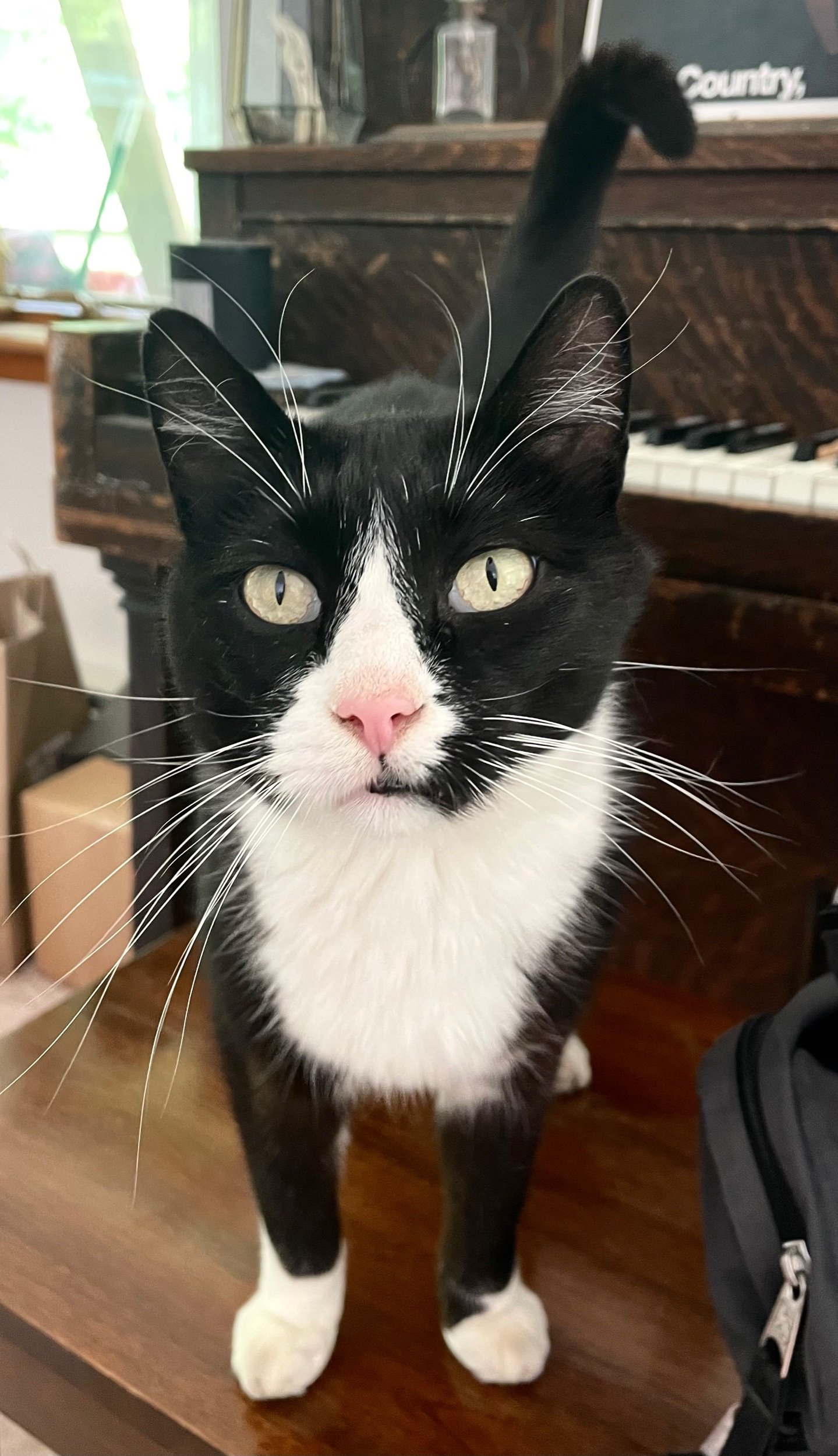The music deftly walks that landscape, played with great dimension by Spektral violinists Clara Lyon and Theo Espy, violist Doyle Armbrust and cellist Russell Rolen. The group disbanded last year and this is one of their final releases, capping a stellar legacy of carving out their own routes in the crowded world of post-Kronos quartets. Holter, whose own music shares this sense of borderless artistry and personal exploration, is a perfect partner, giving voice to the full range of emotions and experiences in Temple’s poetry.
Chicago Reader: Julia Holter and Spektral Quartet’s Behind the Wallpaper promises that better worlds are possible
Behind the Wallpaper was a staggering achievement in 2015, when Temple wrote it for Los Angeles-based avant-pop vocalist Julia Holter and Chicago’s Spektral Quartet. But on the long-awaited studio recording, released this month by New Amsterdam, the piece is transcendent. Thanks in part to the spectacular work of audio engineers William Brittelle (Roomful of Teeth) and Zach Hanson (Bon Iver), Temple’s 11-movement suite takes new life, particularly in the electronic layers unique to this recording. Here, Holter’s voice is expressively distorted and echoed, and the Spektrals’ strings are also occasionally processed. (The decision to render their jaunty waltz theme in “Masquerade” as a crackly phonograph recording was a stroke of genius.) It’s not quite classical, not quite pop, and not quite monodrama—but it’s all scintillating brilliance. Kudos to the production team for managing to bring still more dimension to the imaginative abandon of Temple’s dre
NPR All Songs Considered: The Best Releases Out on March 3
“I want to flag a new album from Spektral Quartet and Julia Holter, it’s called ‘Behind the Wallpaper.’
Spektral Quartet, a group from Chicago, and Julia Holter, a singer we’ve followed for a while now, together they’ve made this really lovely, transfixing album. It’s part ambient, part contemporary classical – very atmospheric – with Julia Holter’s voice at the center. Really gorgeous. Spektral Quartet and Julia Holter, the album – ‘Behind the Wallpaper.’”
–Robin Hilton
The Quietus: Julia Holter adds measured grace to a song cycle about personal transformation
REVIEW: Julia Holter adds measured grace to a song cycle about personal transformation
Composer Alex Temple’s Behind the Wallpaper is a dreamlike but modern work about change. Inspired by her own transition, she has created a narrative tale that is as bizarre as it is beautiful and realised it through collaborators Spektral Quartet and Julia Holter.
With the exception of a few found sounds and odd percussive details, Chicago string quartet Spektral Quartet provides the only instrumentation on the album. Behind the Wallpaper doesn’t follow set song structures, and the quartet’s contributions take on multi-dimensional characters in the work, from shuddering rhythms to playful pizzicatos to sharp, slicing dissonance. It is equal parts cinematic, romantic and terrifying, and essential to the world building around Temple’s story.
For as dense and vibrant as Spektral Quartet’s instrumentation can be, Behind the Wallpaper is not afraid to peel it all back and embrace minimalism, allowing for Holter’s voice to be accompanied by a single string instrument, for her to sing unaccompanied, and for soft, staticky silence to stretch out for seconds.
As an artist who has collaborated across many and varied genres, Holter is a perfect vocalist for the project. Her vocals are distinctive, instantly recognisable, and yet, as a convincing nod to the fact that she’s lending her voice to someone else’s story, more measured in their phrasing and inflections than she would be on her own work. Holter takes on the role of a narrator, relating the story of a ‘you’ main character, inviting the listener to envision their place in the vividly strange story. Even the winking outro of ‘Unnatural’ follows this course: ‘And you thought, “You make me feel like an unnatural woman.”’
The lyrics shift throughout the album from the surreal (whole fish pouring out of your mouth and the ocean flooding your living room) to the tangibly mundane (the people riding along on a bus). ‘Joline’, the album’s meandering standout, sets a scene of a fantasy horror film, featuring a mystical forest and a house producing new walls and exacting violence on its visitors. The song propels through different movements, tumbling from creaking wood to jaunty rhythms to a see-sawing dissonance. Reaching the end of the song feels like coming through the other side of something, but the emotion of having done so is more conflicted than concrete.
Behind the Wallpaper has the feeling of metamorphosis around it – something new and beautiful that emerges from a painful process. It is not to minimise Temple’s personal story to suggest that the theme will resonate broadly; the lyrics are abstract but will feel familiar to anyone who has made a difficult change in their lives. Indeed, it’s a suitable soundtrack for being unmoored.
–Amanda Farah
Alex Temple: "Blasted away by our bright unbearable reality"
Believe it or not, it's been more than ten years since an offhand tweet birthed the collaboration that would eventually result in this album. Cut to the fall of 2012: Spektral had recently asked me to write a short piece for them, and I was considering adding a vocal part that I would perform myself. Then one day Julia, who I'd been friends with since long before anyone had heard of either of us, happened to be playing Schuba's Tavern in Chicago. We met up for so-so Thai food, and I tweeted that I was hanging out with her for the first time in ages, because back then Twitter was still mainly for that sort of thing rather than hate speech and conspiracy theories. Doyle replied, half-jokingly suggesting that I ask her if she wanted to sing on my piece for the quartet. I did, and she did.
Sequenza 21: Julia Holter and Spektral Quartet record Alex Temple (CD Review)
Out this Friday, March 3rd, via New Amsterdam Records is composer Alex Temple’s cycle Behind the Wallpaper. Vocalist Julia Holter joins the Spektral Quartet in this song cycle inspired by Temple’s gender transition.
Holter, as always, is a marvel, with expressive, liquescent singing throughout her soprano voice’s range. The Spektral Quartet is given a variety of styles to play, from doleful lyricism reminiscent of Shostakovich’s string quartets to post-minimalism. The musical smorgasbord reminds me in places of Elvis Costello’s collaboration with the Brodsky Quartet, The Juliet Letters. Temple is fluent in marshaling these materials. Behind the Wallpaper deals with a significant event in Temple’s life, yet her touch is light and lyrics affirming. Recommended.
–Christian Carey
The "Why" of Behind the Wallpaper
Why are we putting out an artist statement? Especially when the story of Behind the Wallpaper stands - dreamily, fantastically, powerfully - on its own?
I wonder, have you noticed this particular dichotomy between the musical world and the visual art world? At concerts, a performer will often introduce a piece of music by sharing a tidbit about a composer, sandwiched between multiple iterations of “and we’re sharing it because it’s some of our favorite music to play.” So, let’s get that part out of the way.
(Cue applause) “This music is some of our favorite music to play!”
Night After Night: A Reflection by Theo Espy
The crackly, old-timey string flourish that begins “Night After Night” (Track 8) is one of my very favorite moments on the album. At this point in the piece the listener is deep within the twists and turns of Alex’s mysterious narrative, and has traversed so many sound worlds and stylistic shifts that reality has begun to blur...
Typically when we’ve approached recording music as a classical string quartet we have found ourselves striving for organicism in the recording/mixing/mastering process, and a natural quality in the “sound” of the recording. Basically, we endeavor to recreate the concert experience with as much fidelity as we can, while polishing some rough corners and creating a delicate balance within the mix that helps each part of the composition shine. For “Behind The Wallpaper” we decided to take a different tack - one that would stretch us, and which we hoped would serve the concepts behind Alex’s compositions and the storytelling of the song cycle. Leaving behind any attachment to “realism” opened many new doors, through which we were shepherded by our brilliant recording team: producer Bill Brittelle and audio engineer Zach Hanson. As we embarked on the mixing and editing process, we allowed ourselves to lean into a purposeful distortion or altering of the materials we came away from the recording studio with. The engineering of the album went from being a subtle and sublimated ‘tool’, to an instrument in its own right. Together with Zach, Bill and Alex we dove into experimenting with filtering, layering, and processing of our sound in a way that would help transport the listener immediately into distinct environments and draw on sonic associations to make that type of auditory teleportation as immediate and as arresting as possible.
Theo Espy in conversation with ‘Behind the Wallpaper’ cover art creator Cat Graffam
TE: Hey Cat! Thanks so much for taking the time to chat. To start us off, can you talk a little about your background and trajectory as an artist, and the process of arriving at your current artistic practice, style, etc?
CG: I arrived at being an artist at a tumultuous time at the end of highschool. I had a lot of trouble at school and home, so entering my senior year I had planned on either dropping out or committing suicide. It was then when I took an art class and my art teacher believed in me and made me apply to art school. Once I found a love for painting in college, I knew that it was going to be my purpose. Art saved my life. My major inspirations stylistically spawned from 20th century painters like Francis Bacon and Kathe Kollwitz. Since then it has evolved, devolved, and changed many times into a more intricate and calmer practice.
TE: Art is absolutely life-saving. I love the way you describe your inspirations both evolving and “devolving” over time - I have definitely witnessed myself experiencing similar patterns with musical influences I’ve had in my past as well. What’s your relationship to music, and does it ever intersect with your practice? Do you listen to music while working? Is this your first time creating artwork specifically to accompany a musical work?
CG: Music is maybe more influential for me than visual art now. Many of the titles of my pieces are bits from songs that I was thinking about or listening to when I created a particular painting. I have done some smaller-scope album covers for friends, but this is certainly the most serious of them!
Brooklyn Vegan: 26 New Songs Out Today
SPEKTRAL QUARTET - "NIGHT AFTER NIGHT" FT. JULIA HOLTER
Alex Temple composed Behind The Wallpaper, the new album from string ensemble Spektral Quartet, which features Julia Holter on most of its songs. The latest single is the beautifully orchestral "Night After Night."
Classical music needs more pieces like 'Behind the Wallpaper'
Do you read an album’s liner notes?
I do, though in this non-corporeal age of recordings it tends to involve a bit more conscious effort. The outside chance that I’ll encounter a key to unlocking some less-obvious element of the performance, or hell, even just reading an entertaining quip could be likened, for me, to the nervous anticipation of scuffing the foil rectangle on a scratch ticket. It’s thrilling, and the odds are at least better than the Mega Millions.
'No Regrets' Poster Secrets...Revealed!
If you attended our final Chicago show, No Regrets, you left with a hand-screen-printed poster, signed by its creator, artist Ben Chlapek. It is an image bursting with esoteric Spektral symbolism, and we promised to decode it for you one day.
Well, that day has arrived! These are the insider-i-est of inside jokes amongst the quartet members, so explanations will not always lead to understanding…but now you know.
No Regrets...But A Few Tears (Video & Photo Gallery)
When friends would inquire about the preparations for our final Chicago show – No Regrets (June 12th, 2022) – the most frequent comparison was to that of planning a wedding. There are the surface-level similarities, like debating over caterers, rolling the dice on a photographer, and the Tetris of deciding on speeches. Maybe the most profound parallel, though, is the feverish desire that the event match the occasion. There are no do-overs on a “final” anything.
Behind the Wallpaper Gets mixed
Hey there, friends, it’s been a minute.
Presenting our last Chicago show, rolling up the carpets in our studio, and gifting away our gear all feels very much like a goodbye. But the job is far from over. The part you haven’t seen is the flurry of work in preparing our final recordings for release next season.
We are currently deep in the mixing phase of Alex Temple’s Behind the Wallpaper, which we recorded with vocalist Julia Holter this spring at Electrical Audio in Chicago. For those of you that haven’t had the pleasure of staring at your pores under a microscope for days at a time (i.e. recording an album), mixing is the bit where we bump this or that voice into greater or lesser prominence, add effects to make us sound like we’re playing underwater or aboard an alien spacecraft, and/or decide on our proximity to your ears: tickling your brain, in another room altogether, or somewhere in between.
After our tour to Iceland, we drove up to beautiful Eau Claire, Wisconsin with Alex to meet our sonic necromancers: producer Bill Britelle (New Amsterdam Records) and mixing engineer Zach Hanson. Despite Theo and Doyle getting grounded with Covid, we managed to sprinkle magic fairy dust on all but a few of the 10 tracks, and we’ve been cracking on the rest from afar ever since.
We have to tell you, Behind the Wallpaper is going to be a very, very special record. It’s not a pop album nor a classical album. It’s an album that will seduce and disturb and surprise you at every turn.
Thanks to Alex’s keen eye and Clara’s quick shutter finger, we are able to give you a peek into this mixing process. Thank you for continuing to support one of the most consequential, musically adventurous records we’ve ever made!

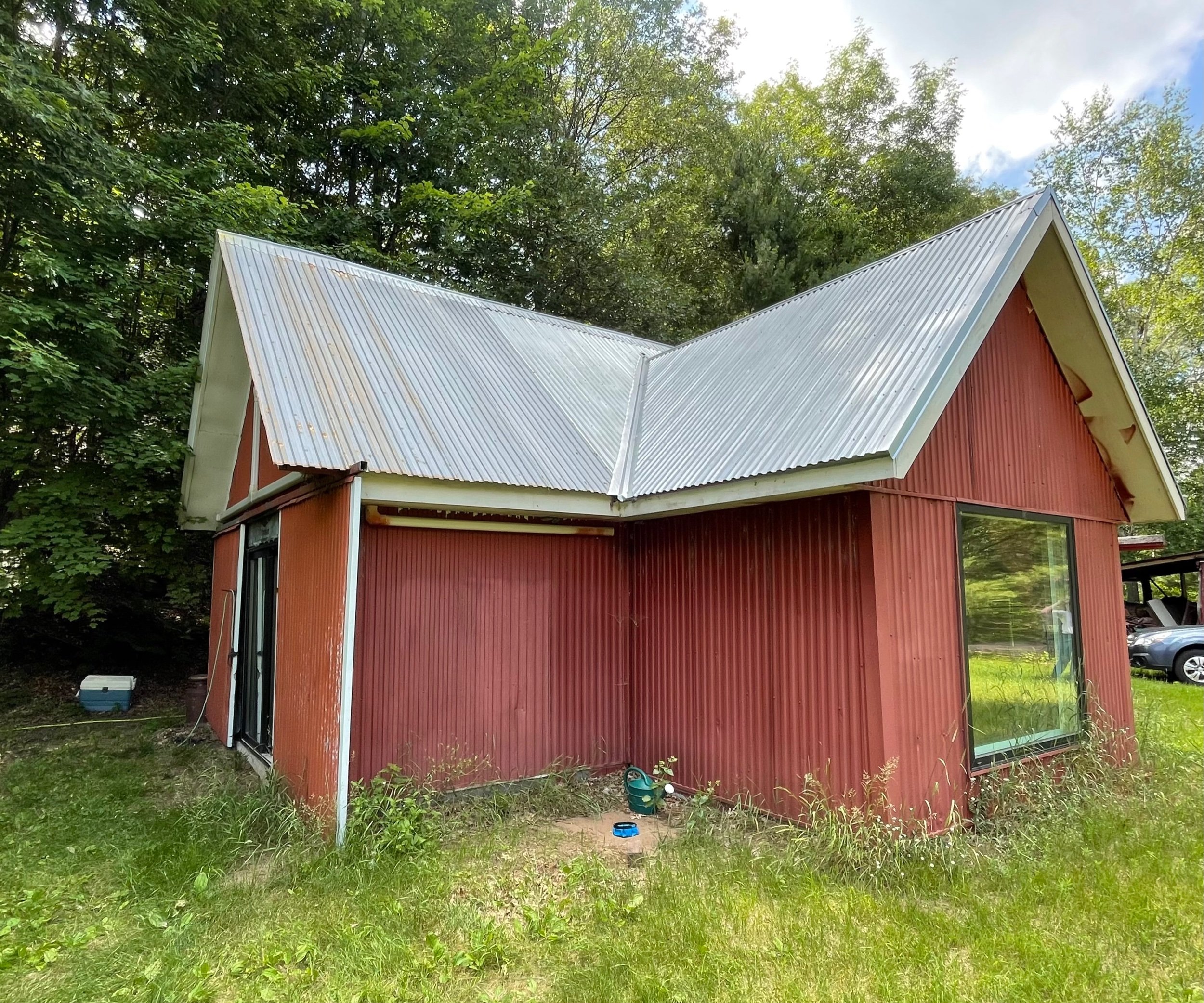
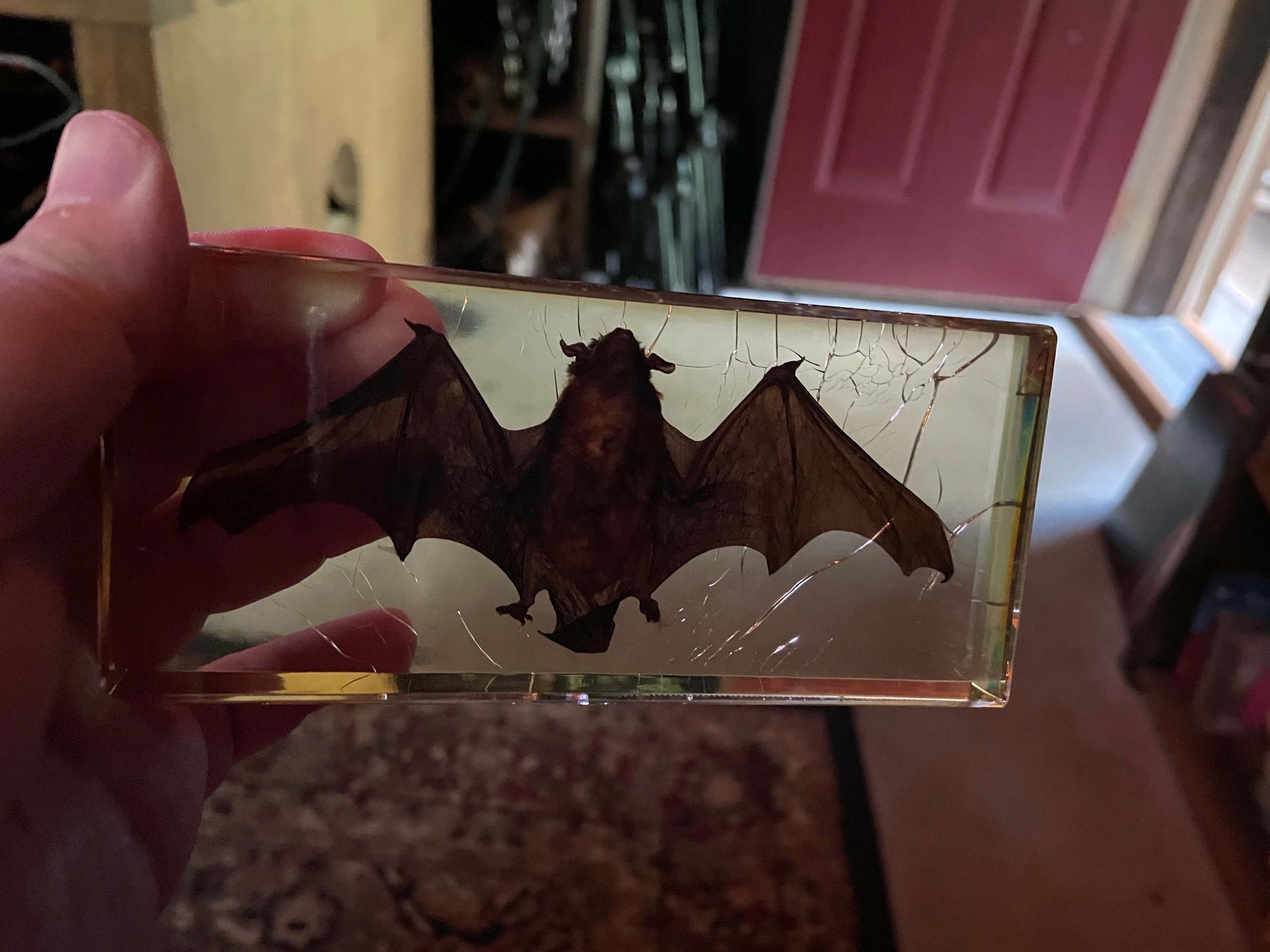
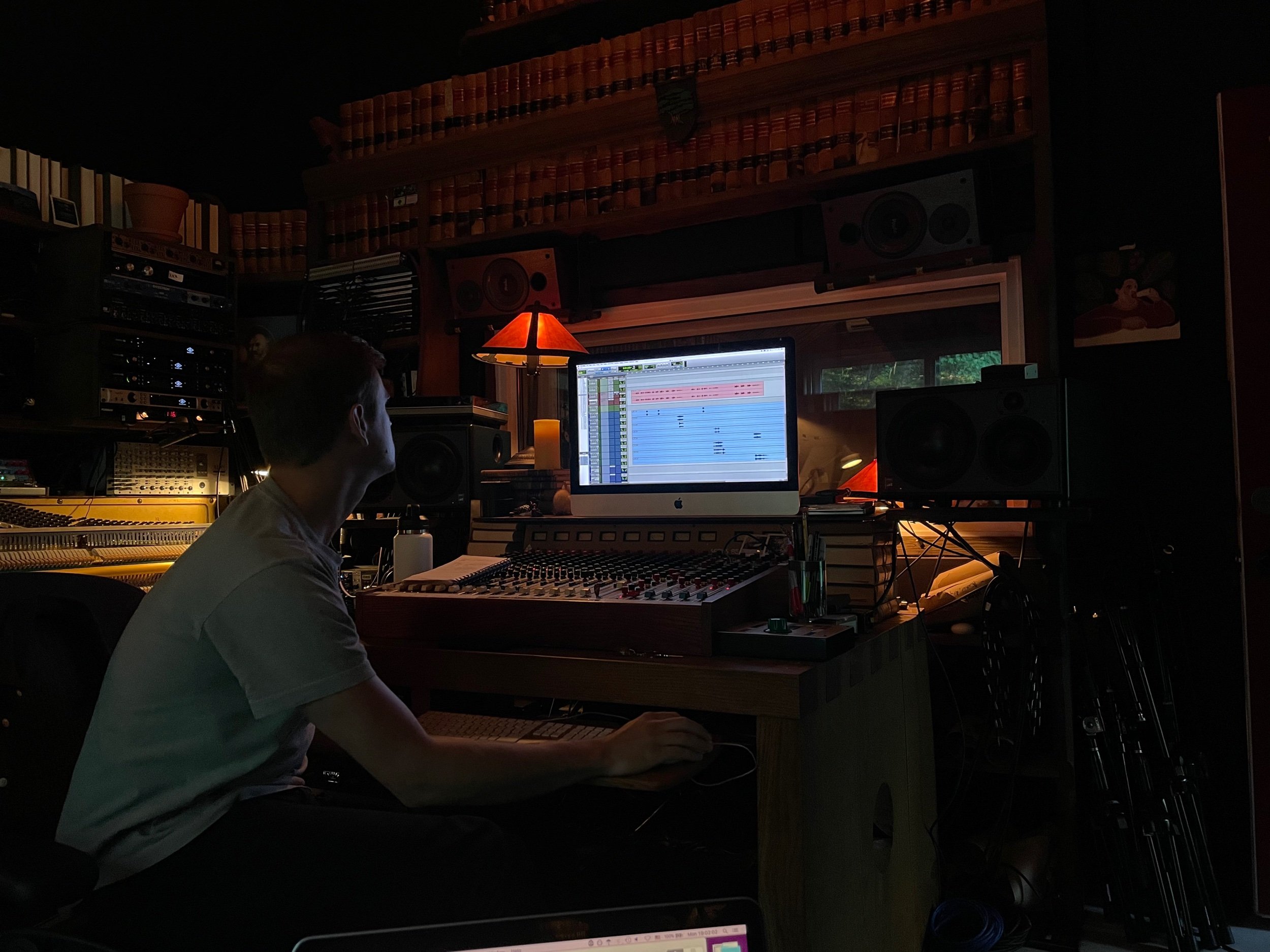
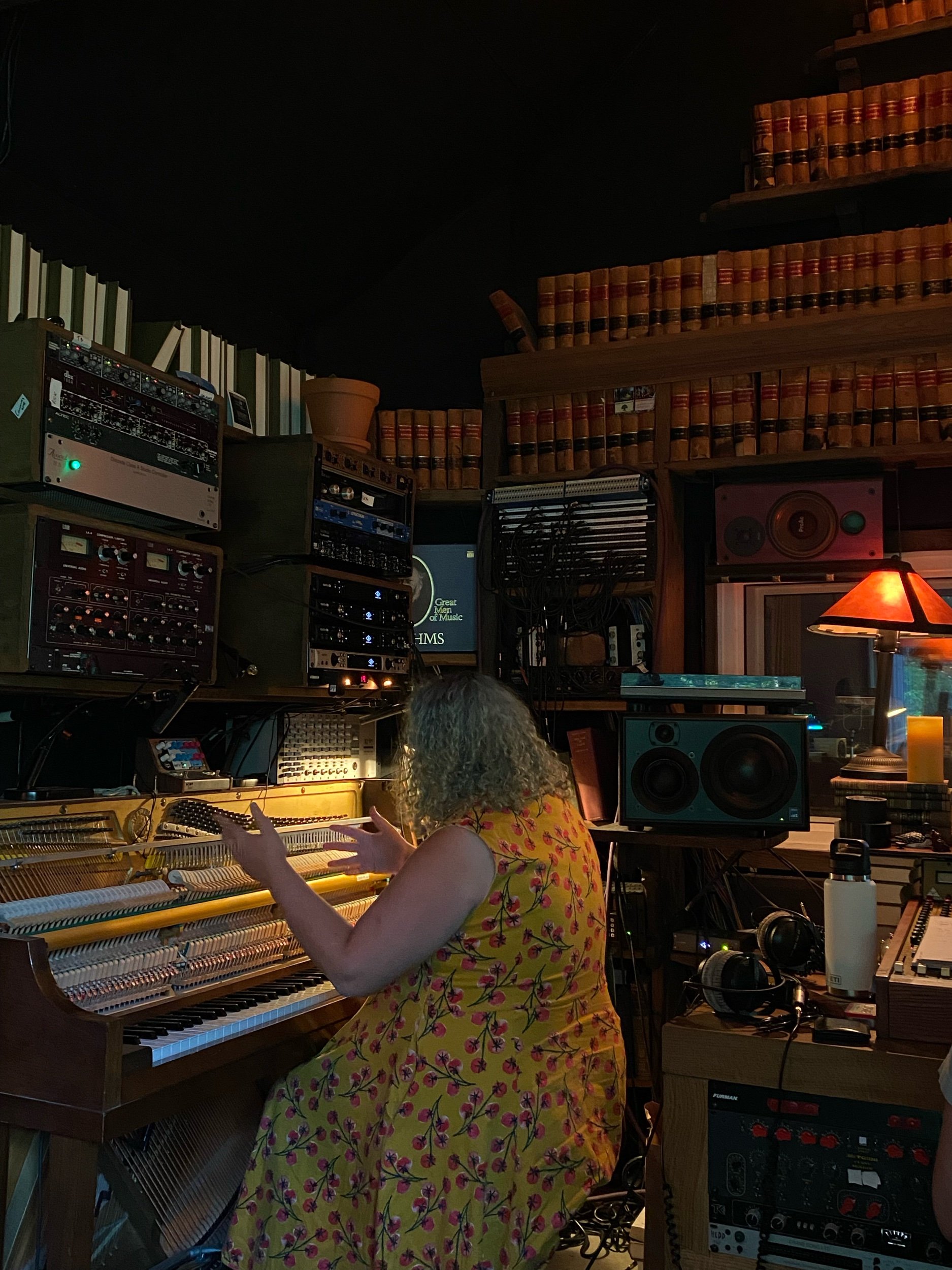
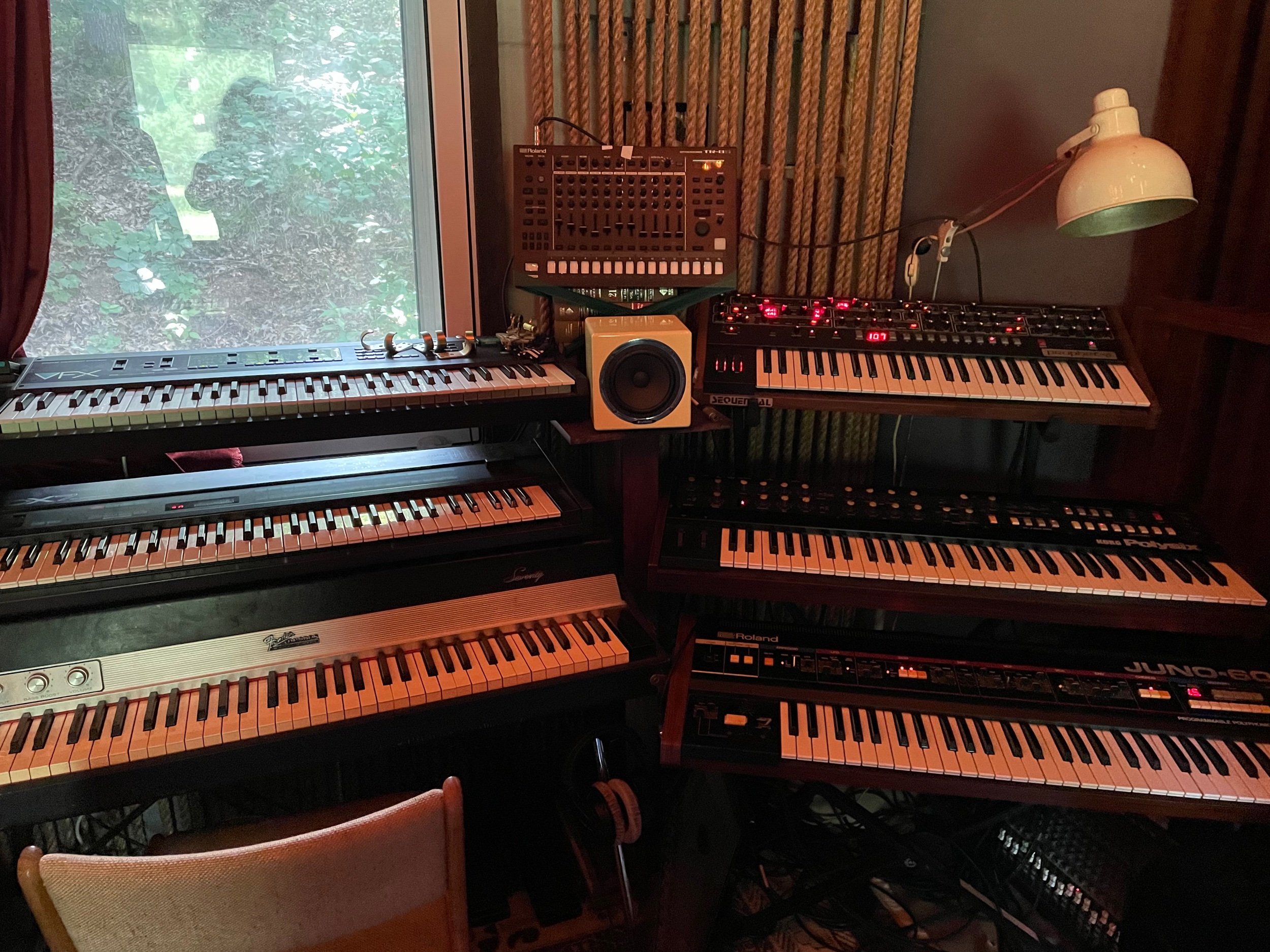

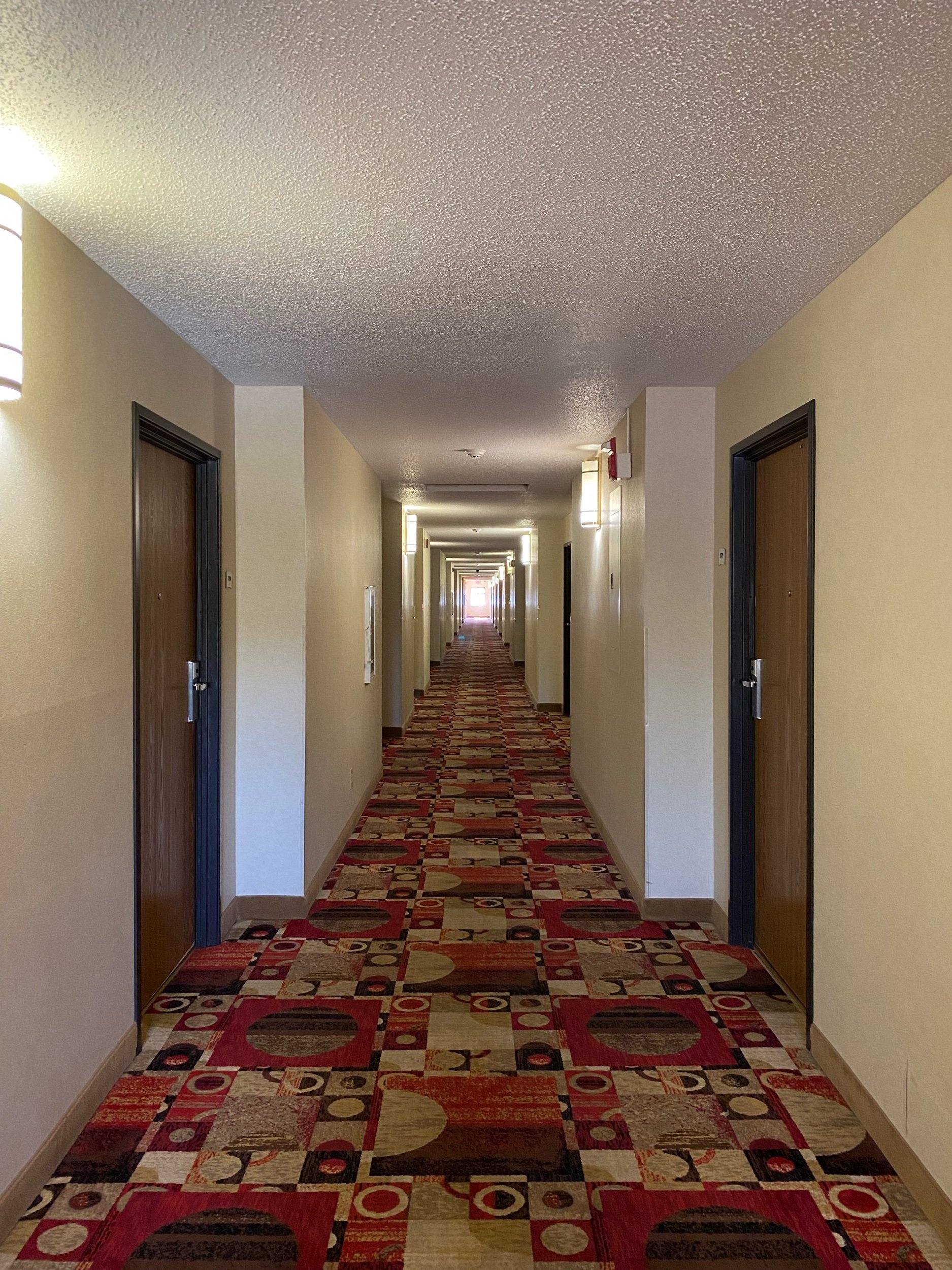
Chicago Tribune: After more than a decade, Chicago’s Spektral Quartet hangs up its bows. The Grammy-nominated group is going out ‘with a bang.’
If the walls of Spektral Quartet’s Rogers Park rehearsal space could talk, they’d tell you about all the remarkable music they’ve heard there in the past 12 years, selections from Debussy and Schubert sitting comfortably alongside, say, Sufjan Stevens arrangements.
Then, they’d probably groan about the godawful viola jokes they’ve overheard.
Violinists Clara Lyon and Theo Espy (who previously performed under the name Maeve Feinberg), violist Doyle Armbrust and cellist Russell Rolen are unrepentant on that point — after all, you’re talking to the quartet who once released an album cover of Armbrust mid-tumble on Northwestern University’s quad.
“Humor is pretty essential to what we do and how we approach our programming,” Lyon says.
It’s also precisely what endeared them to classical music acolytes, serious and not-so-serious alike. During that time, the string quartet blossomed from a local treasure to an internationally renowned, Grammy-nominated juggernaut, especially in the sometimes-niche sphere of contemporary classical music.
